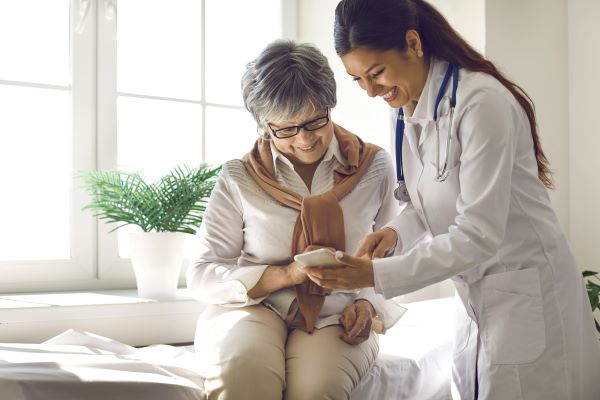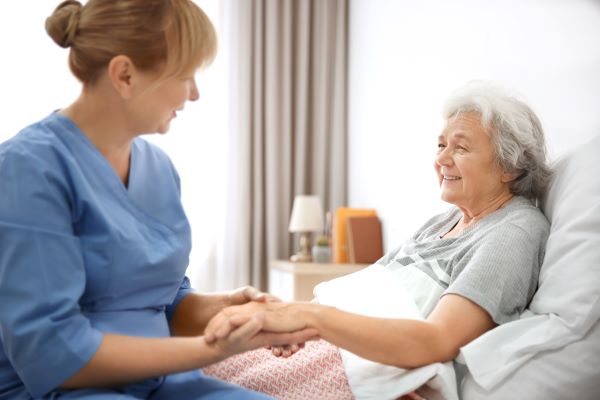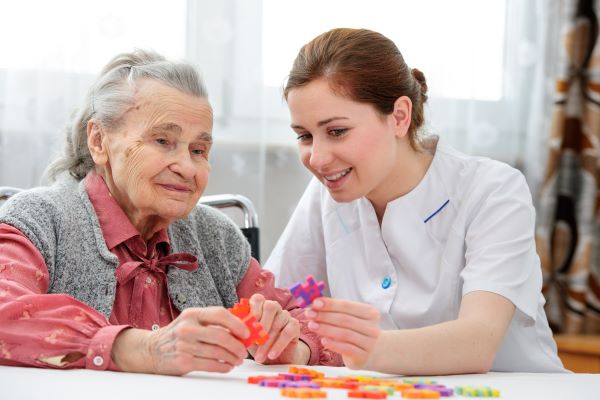Trusts are generally created when one person or firm manages assets for the benefit of…

Understanding the Internet of Medical Things
A new year brings new technologies into our lives. The Internet of Medical Things (IoMT) offers ways to reduce medical costs and assist patients, including seniors, with their healthcare needs.
What is the IoMT?
The Internet of Medical Things refers to the collection of medical devices and applications that connect to, and communicate with, healthcare information technology systems via the internet. By allowing the transfer of medical data via secure networks between patients and their physicians, these devices can reduce unnecessary hospital and medical clinic visits.
These devices and applications range from wearable products for a patient’s daily use to large-scale systems used in hospitals and clinics.
Wearable Devices
Wearable IoMT devices fall into two broad categories:
- Consumer-level wearables
- Medical- and clinical-grade wearables
Consumer-level wearables include devices used for personal fitness and wellness. Examples include sports watches and wristbands that track the wearer’s activity or vitals. These devices are usually not regulated by health authorities or monitored by health professionals. They are simply for personal use.
Medical- and clinical-grade wearables include devices and supporting platforms usually certified or approved by one or more regulatory authorities, such as the US Food and Drug Administration. In most cases, a physician prescribes these devices, and patients use them with expert guidance. Examples of these types of devices include a smart belt that can detect if the wearer has fallen and a neuromodulation device that connects to sensory nerves to offer relief from chronic pain.
IoMT in the Home
The category of Internet of Medical Things for the home includes devices and services for remote patient monitoring (RPM), personal emergency response systems (PERS), and virtual telehealth visits.
Remote patient monitoring includes devices and sensors that can be used for a range of things, including:
- Chronic disease management, which involves monitoring physiological parameters in an effort to slow disease progression
- Continuous observation of discharged patients to aid in recovery time and prevent re-hospitalization
- Medication management to remind patients of when to take their medications and how much to take
Personal emergency response systems connect wearable devices and relay units to medical service call centers to allow for a faster reaction in case of an emergency. These systems let homebound and limited-mobility seniors live more independently.
Telehealth virtual visits include video consultations and remote evaluations. These can be done through a device with a camera, microphone, and connection to the Internet, such as a computer, tablet, or smartphone. The advantage is patients can get help managing their conditions and can get prescriptions and care plans while in the comfort of their homes.
IoMT in Hospitals and Clinics
There are many ways IoMT technology can be used in a hospital or clinic setting. Some examples include:
- Patient flow management systems can improve hospital operation, such as preventing bottlenecks by monitoring patients from arrival time to procedure to post-care, and their hospital rooms
- Personnel management can measure staff efficiency and productivity
- Environment and energy monitoring systems can monitor and adjust temperature, humidity, and electricity usage in various rooms and areas
- Asset and inventory management systems track and manage things such as high-value equipment, hospital supplies, medications, and other consumables
As more hospitals, clinics, and other health care providers adopt more IoMT technologies, more of us will be able to take advantage of their benefits and conveniences.
Our law firm is dedicated to keeping you informed of issues that affect seniors who may be experiencing declining health. We help you and your loved ones prepare for potential long-term medical expenses and the need to transition to in-home care, assisted living care, or nursing home care.
If you have any questions about something you have read or would like additional information, please contact our Albany office today at (518) 452-6979 and schedule a consultation.



